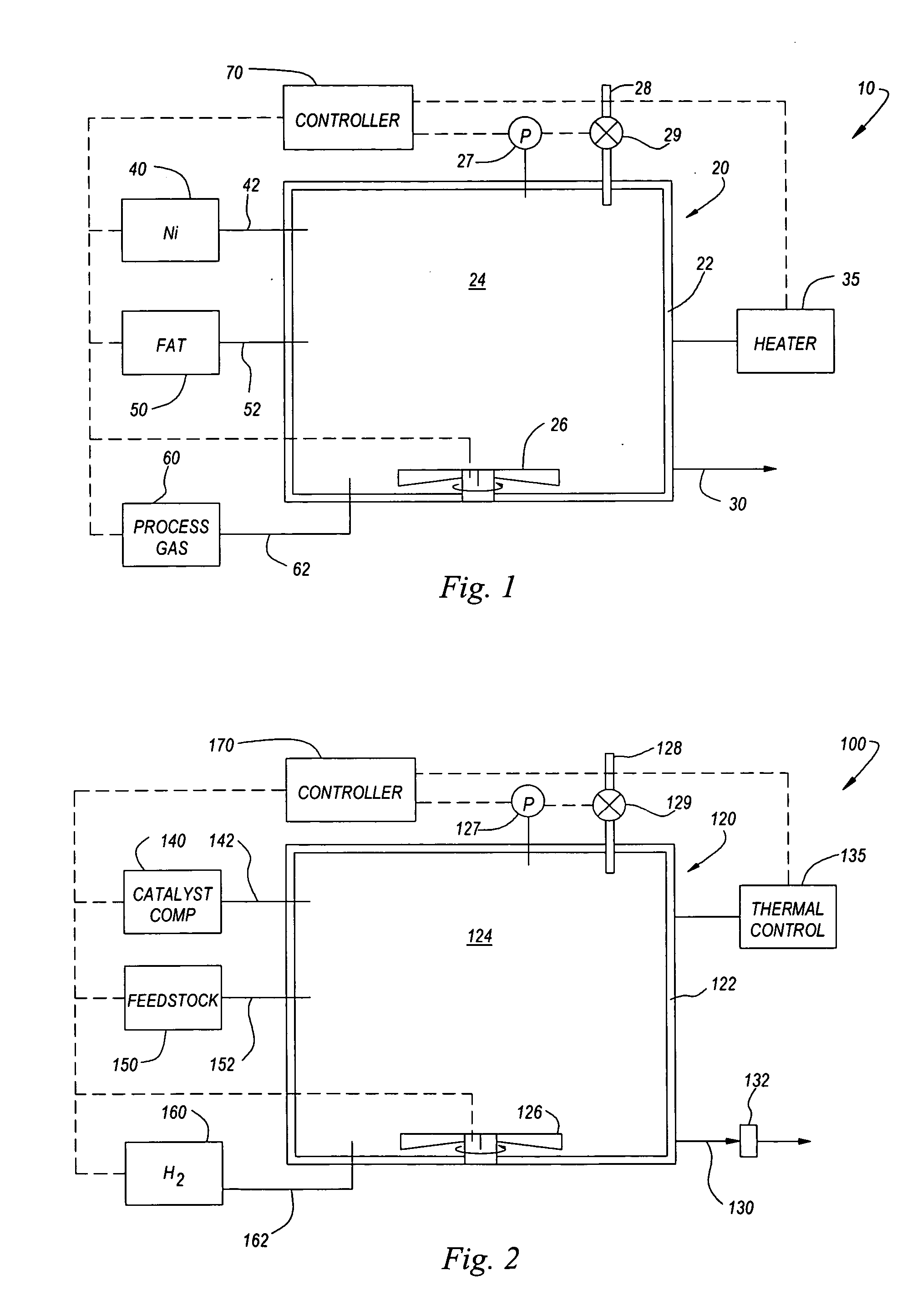Low trans-fatty acid fat compositions; low-temperature hydrogenation, e.g., of edible oils
- Summary
- Abstract
- Description
- Claims
- Application Information
AI Technical Summary
Problems solved by technology
Method used
Image
Examples
example 1
CATALYST ACTIVATION EXAMPLE 1
A first exemplary catalyst composition was formed by adding 40 g of PRICAT 9920 to a round-bottom 250 ml flask. The PRICAT 9920, which is commercially available from Johnson Matthey Plc, is nominally about 22 weight percent total nickel on an alumina support coated with a hardened vegetable fat as a protective medium. The hardened vegetable fat has a melting point (as measured under ISO 6321, “Melting Point in Open Capillary Tubes (Slip Point)”) of about 56-69° C. The catalyst composition was heated in the flask at atmospheric pressure with a hydrogen gas flow of approximately one liter per minute to a temperature of about 200° C. while stirring. The catalyst composition was stirred at that temperature and hydrogen flow rate for about 90 minutes. The hydrogen pressure was increased to about two bar and the hydrogen flow was stopped. The catalyst composition was cooled to about 20° C., yielding a solid catalyst composition.
example 2
CATALYST ACTIVATION EXAMPLE 2
A second exemplary catalyst composition was formed using substantially the same process as that outlined in Catalyst Activation Example 1, except that about 40 g of coconut oil was added to the flask with the 40 g sample of PRICAT 9920. The resultant activated catalyst composition was solid at 20° C. and the fat in the catalyst composition had a melting point of about 50° C.
example 3
CATALYST ACTIVATION EXAMPLE 3
A third exemplary catalyst composition was prepared by flowing nitrogen (instead of hydrogen) through a bulk quantity of PRICAT 9920 to a pressure of about 2 bar. The temperature was held at about 110° C. for about 120 minutes, with the nitrogen atmosphere in the reaction vessel being maintained by periodically flushing the headspace of the reaction vessel with nitrogen.
Once the activation process is complete, the activated catalyst composition may be removed from the vessel 20, e.g., via outlet 30. In one embodiment, the activated catalyst composition may be delivered directly from the vessel 20 to the catalyst composition supply 140 of the hydrogenation system 100, discussed below. In such an embodiment, the activated catalyst composition may be delivered to the hydrogenation system 100 at an elevated temperature, e.g., at the activation temperature or, more generally, about 100-200° C. In other embodiments, the activated catalyst composition may be...
PUM
 Login to View More
Login to View More Abstract
Description
Claims
Application Information
 Login to View More
Login to View More - R&D
- Intellectual Property
- Life Sciences
- Materials
- Tech Scout
- Unparalleled Data Quality
- Higher Quality Content
- 60% Fewer Hallucinations
Browse by: Latest US Patents, China's latest patents, Technical Efficacy Thesaurus, Application Domain, Technology Topic, Popular Technical Reports.
© 2025 PatSnap. All rights reserved.Legal|Privacy policy|Modern Slavery Act Transparency Statement|Sitemap|About US| Contact US: help@patsnap.com

